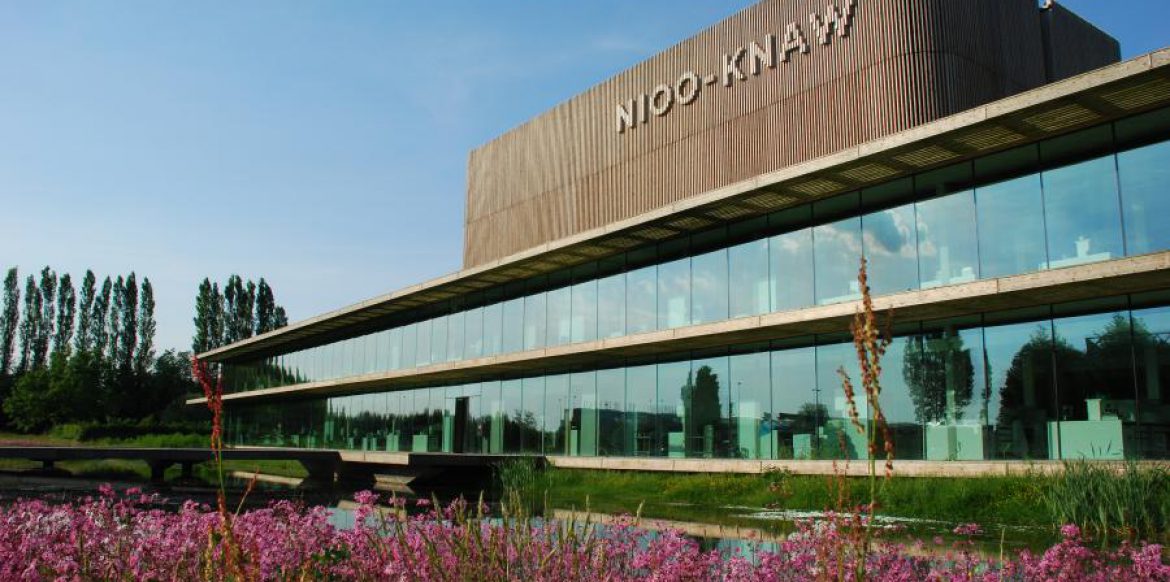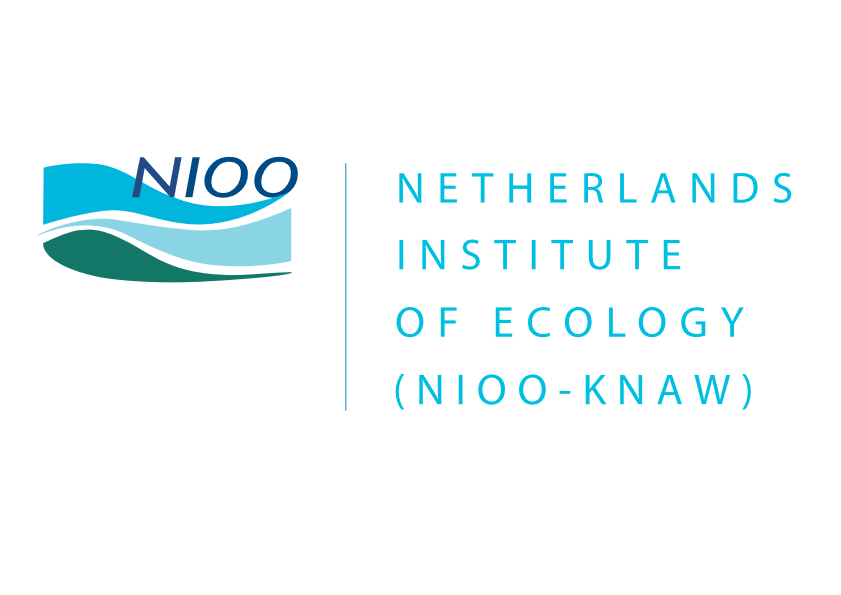

Learning from nature
The Netherlands Institute of Ecology, is one of the research institutes of the Royal Netherlands Academy of Arts and Sciences (KNAW), studies the effect of nature in all its many forms. It is, therefore, only fitting that ecological processes and the dynamics of nature themselves influenced the design and construction of their new premises. The brief was to design a building that is comfortable and functional but that also blends into the surrounding environs. A tall order? With vision, creativity and perseverance, anything is possible.
Cradle to Cradle (C2C)
Some years ago, NIOO decided to merge activities from two of its locations into one new sustainable building. NIOO director, Professor Louise Vet, was inspired by the Cradle to Cradle (C2C) principles and wanted to take the design and construction of their building one step further than the most sustainable buildings built to date in the Netherlands. Sustainability is generally measured by energy efficiency; the C2C concept, however, poses new criteria. The question is not what can we do to limit environmental damage, but rather how can we make a valuable contribution to the surrounding environment?
The C2C guiding principle is that production should be waste free. In the Cradle to Cradle model, everything we make and leave behind is regenerated as raw materials for use in the natural environment or in new products. The other two main principles are: use solar energy and celebrate biodiversity. The designers were instructed to keep as close to this philosophy as possible.
Labaratories, Research, Offices, Canteen, Seminar Rooms,
Project Architects: Claus and Kaan Architects
Project Developer: Louise Vet (Director NIOO-KNAW)
Project Engineers & Contractors: A diverse design team was put together under the leadership of Archisupport, which included the construction company Bouwbedrijf Berghege, DGMR Engineer Consultancy and DWA installation and energy consultants.
⁂ Integrate Biological Nutrients, Enhance Air Quality and Indoor Climate, Enhance Water Quality, Healthy Materials (Design for Disassembly, Material Re-Use, Carbon Management)
⁂ Integrate Renewable Energy
⁂ Actively Support Biodiversity, Celebrate Conceptual Diversity with Innovation
Positive Impact
NIOO director, Professor Louise Vet, was inspired by the Cradle to Cradle (C2C) principles and wanted to take the design and construction of their building one step further than the most sustainable buildings built to date in the Netherlands. Sustainability is generally measured by energy efficiency; the C2C concept, however, poses new criteria.
Benefits
The question is not what can we do to limit environmental damage, but rather how can we make a valuable contribution to the surrounding environment? The C2C guiding principle is that production should be waste free. In the Cradle to Cradle model, everything we make and leave behind is regenerated as raw materials for use in the natural environment or in new products. The other two main principles are: use solar energy and celebrate biodiversity. The designers were instructed to keep as close to this philosophy as possible.
Used Materials
Furniture in the offices, glass, plato wood, wool, flax, steel, eco-concrete
⁂ Integrate Biological Nutrients, Enhance Water Quality, Healthy Materials (Material Re-Use, Defined Intended Use Pathway)
⁂ Integrate Renewable Energy
⁂ Actively Support Biodiversity, Celebrate Conceptual Diversity with Innovation
Positive Impact
A roof that contains water, where the nature can take in the city and can regulate the temperature of the underlying building. That’s the roof that a large group of collaborating organizations are testing at the Dutch Institute of Ecology (NIOO). And we don’t forget the delivering power by plants and enjoyment for people.
Benefits
In the cities of the future, green roofs take an important place. Where there is no place on the ground, roofs can offer a place for nature a few floors higher. In addition, it contributes to water storage and purification, energy-saving insulation of the building underneath and even the cultivation of electricity producing plants. An associated roof like the NIOO makes the experiments not only attractive for rare and endangered species, but also for humans.
⁂ Integrate Biological Nutrients, Enhance Air Quality and Indoor Climate, Enhance Water Quality, Healthy Materials (Material Re-Use)
Positive Impact
The Netherlands Institute of Ecology, (NIOO-KNAW), studies the effect of nature in all its many forms. It’s, therefore, only fitting that ecological processes and the dynamics of nature themselves influenced the design and construction of their new premises.
Benefits
Material
At the building a few challenging demands were made for the materials implemented: healthy for people and the environment, made from renewable resources and economically produced. This resulted in a hull of durable concrete, where in the finishing as little as possible, use is made of kit, solvents and the like. The building is also constructed from (FSC) wood, glass, steel, flax, limestone and rubble granulate which also looks very natural.
Used Materials
(FCS) wood, glass, steel, flax, limestone, rubble granulate
⁂ Integrate Renewable Energy
The focus is both on the reduction of energy use and the sustainable generation of it. The strength of the artificial light, for example, is dependent on the amount of light at that time. There is also a special experiment planned with a new generation of solar cells. The solar collector has the shape of a sphere and should be highly efficient with the concentrated solar power that it will supply. Solar heat is stored by a High Temperature Storage. This storage is located at least 300 meters below ground. This is much deeper than any other storage system up to now in the Netherlands. Through this system, the excess heat of summer can be held until the next winter season. This leads to an energy saving of some 70 to 80%.
⁂ Enhance Air Quality and Indoor Climate
⁂ Integrate Renewable Energy
⁂ CO2 ventilation
Positive Impact
At the NIOO we use hybrid ventilation. All offices have natural ventilation and you can just open the window.
Fresh outside air is sucked in and blown out again through the air handling system.
At low temperatures or high winds the windows are closed. At that time, the system switches to mechanical supply of fresh ventilation air through an air handling unit. Additionally, this takes back heat to save energy.
The CO2 control ventilation system is working only when it’s needed: when there are more people in a room, the concentration of CO2 is higher and the system automatically starts to ventilate.
Benefits
Working in an eco-effective and controlled energy building, where it’s enjoyable to work with fresh air and good light improves the well-being of the occupants.
There are no delights in this project.
| Cookie | Dauer | Beschreibung |
|---|---|---|
| cookielawinfo-checkbox-analytics | 11 months | This cookie is set by GDPR Cookie Consent plugin. The cookie is used to store the user consent for the cookies in the category "Analytics". |
| cookielawinfo-checkbox-functional | 11 months | The cookie is set by GDPR cookie consent to record the user consent for the cookies in the category "Functional". |
| cookielawinfo-checkbox-necessary | 11 months | This cookie is set by GDPR Cookie Consent plugin. The cookies is used to store the user consent for the cookies in the category "Necessary". |
| cookielawinfo-checkbox-others | 11 months | This cookie is set by GDPR Cookie Consent plugin. The cookie is used to store the user consent for the cookies in the category "Other. |
| cookielawinfo-checkbox-performance | 11 months | This cookie is set by GDPR Cookie Consent plugin. The cookie is used to store the user consent for the cookies in the category "Performance". |
| viewed_cookie_policy | 11 months | The cookie is set by the GDPR Cookie Consent plugin and is used to store whether or not user has consented to the use of cookies. It does not store any personal data. |